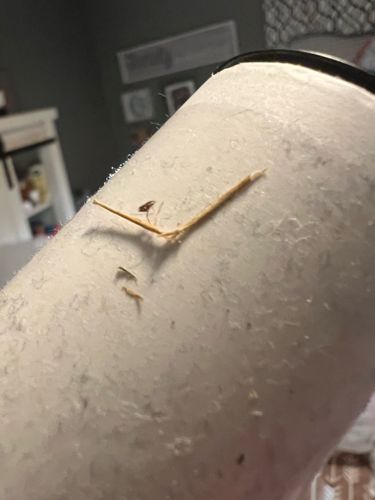Booklouse
Scientific Name: Psocoptera (various species)
Order & Family: Order Psocoptera, various families (e.g., Liposcelididae, Psocidae)
Size: Typically 1-2 mm in length, wingless or winged depending on species.

Natural Habitat
Damp, warm, and dark environments; commonly found in stored books, paper, cereals, old furniture, or locations with high humidity and mold growth. They are indoor pests.
Diet & Feeding
Microscopic mold, fungi, starch-based materials (e.g., glue in book bindings, wallpaper paste, flour, cereal), and organic debris.
Behavior Patterns
Nocturnal, cryptic, and often go unnoticed until populations are significant. They prefer high humidity (above 60-70%) and moderate temperatures. Many species reproduce parthenogenetically (without males). They are not known to bite humans or pets.
Risks & Benefits
Potential risks include damage to stored books, paper products, and food items (though usually minor). They can also be a nuisance due to large numbers. They are not known to transmit diseases to humans or cause structural damage. There are no significant benefits associated with their presence in human dwellings, but in natural environments, they contribute to decomposition processes.
Identified on: 10/15/2025